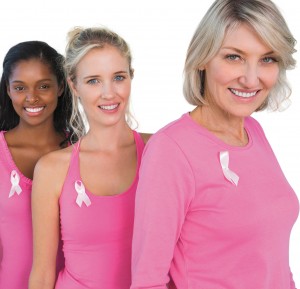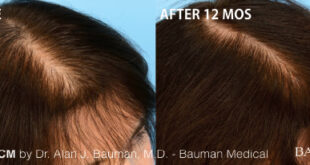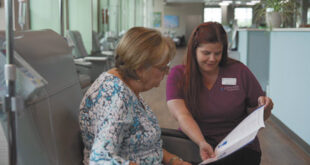By Carlos Eduardo Ramírez, MD –
 October is National Breast Cancer Awareness Month, but taking care of your breast health must be a continuous yearlong endeavor. It doesn’t need much time, or effort, and the rewards are plenty.
October is National Breast Cancer Awareness Month, but taking care of your breast health must be a continuous yearlong endeavor. It doesn’t need much time, or effort, and the rewards are plenty.
According to the American Cancer Society Breast Cancer is one of the top 10 causes of death for women in the United States. Regular breast exams and mammograms are the best tools available to doctors to find breast cancer early. When breast cancer is found early, the five-year survival rate is 96 percent, Breastcancer.org reports that about 1 in 8 U.S. women (just under 12%) will develop invasive breast cancer over the course of her lifetime. In 2011, an estimated 230,480 new cases of invasive breast cancer were expected to be diagnosed in women in the U.S., along with 57,650 new cases of non-invasive (in situ) breast cancer. About 2,140 new cases of invasive breast cancer were expected to be diagnosed in men in 2011. A man’s lifetime risk of breast cancer is about 1 in 1,000.
Monthly Breast Self-Exams (BSE)
Good news is that there are ways to maintain and take care of your breast health. Every woman should become empowered and learn about BSE. This is done to detect breast problems, such as the presence of a lump or change in the appearance of the breast, which may indicate conditions that require medical attention.
BSE requires no special equipment or preparation and can be done at your leisure. The best time to do a BSE is usually one week after your menstrual period begins, when your breast tissue is least likely to be swollen or tender. If for whatever reason you have no menstrual period, schedule your self-examination for a day that is easily remembered, for example the number of the day you were born.
Most breast tissue has some lumps and areas of thickness but when in doubt check your other breast. If you find the same kind of lump in the same area on the other breast, both breasts are probably normal.
Breast Lumps
Breast lumps are common, especially in women ages 30 to 50. About 40% of women will discover a breast lump at some point in their lives. Finding a lump doesn’t necessarily mean cancer. In fact, Eighty percent, 8 in 10, of all breast lumps are benign, which means they’re not cancerous. Benign breast lumps usually have smooth edges and can be moved slightly when you push against them. They are often found in both breasts. Pay attention to any lump that feels much harder than the rest of your breast.
A number of conditions can result in a lump or lumps in your breast. Most of these conditions are harmless or of minor concern. Even though studies show up to 80% of all breast lumps are harmless, keep in mind that a breast lump is not always cancer and breast cancer does not always present with a lump. No matter the size a breast lump must always be evaluated by a competent healthcare professional especially after menopause as older women who have gone through menopause aren’t likely to have lumps change from hormonal influence, so watchful waiting isn’t typically considered an option. The absence of family history is a factor in a small, but important, percentage of breast cancers.
There are several common causes of benign breast lumps, including normal changes in breast tissue, breast infection or injury, and medicines that may cause lumps or pain.
Breast Studies
Breast imaging (mammogram and/or sonography) will be performed if your previous studies are not current. Breast imaging helps determine if the lump is a solid mass or filled with fluid. A biopsy may be recommended in order to remove a sample of cells or tissue from your breast. That sample is then given to a pathologist, a doctor who specializes in diagnosing abnormal tissue changes. Usually you will be given an appointment to return to the doctor for another evaluation in a few weeks.
Despite current controversies, I support screening mammograms beginning at age 40 as they are able to detect breast abnormalities with great accuracy in women in their 40s. Evidence based studies have demonstrated that lesions detected by screening mammography in women in their 40s had a decrease in breast cancer deaths by almost 30 percent. Women in high risk categories should have screening mammograms every year and typically start at an earlier age. Ultrasound screening can also be given in addition to mammograms. Breast MRI screening, in addition to mammogram, is mostly used in high risk cases, such as where there’s a lifetime risk of breast cancer greater than 20%. Discuss the best approach with your doctor. Visit your gynecologist to have a general physical examination including a breast examination every three years starting at age 20; your gynecologist should perform an annual clinical breast exam starting at age 40.
Despite current controversies, I support screening mammograms beginning at age 40 as they are able to detect breast abnormalities with great accuracy in women in their 40s. Evidence based studies have demonstrated that lesions detected by screening mammography in women in their 40s had a decrease in breast cancer deaths by almost 30 percent. Women in high risk categories should have screening mammograms every year and typically start at an earlier age. Ultrasound screening can also be given in addition to mammograms. Breast MRI screening, in addition to mammogram, is mostly used in high risk cases, such as where there’s a lifetime risk of breast cancer greater than 20%. Discuss the best approach with your doctor. Visit your gynecologist to have a general physical examination including a breast examination every three years starting at age 20; your gynecologist should perform an annual clinical breast exam starting at age 40.
Schedule a Visit
If you find anything that concerns you, schedule a visit with your gynecologist. He, or she, should examine you if you find a:
• area that is distinctly different from any other area on either breast.
• lump or thickening in or near the breast or underarm that persists through the menstrual cycle.
• change in size, shape, or contour of the breast.
• mass or lump, which may feel as small as a pea.
• marble-like area under the skin.
• change in the feel or appearance of the skin on the breast or nipple.
• bloody or clear fluid discharge from the nipples.
• redness of the skin on the breast or nipple.
Most changes you find are not breast cancer but should be checked by a qualified gynecologist. He or she will perform a detailed health history and a thorough clinical breast examination to feel for lumps or other changes in the breast tissue and under the arms. They may recommend that you watch for changes and reexamine the breast in several weeks, sometimes waiting until after your next menstrual cycle. More testing, such as a mammography, breast biopsy or an attempt to remove fluid from inside (aspirate) the lump, may also be done. The lump is a cyst if the fluid inside is not bloody and if the lump disappears after aspiration. If there is nipple discharge, a sample will be collected and examined under a microscope to detect the presence of cells.
Empower Yourself
Empower yourself by learning about, and performing monthly BSE. If you notice any changes in your breasts, such as a new lump, skin changes or nipple discharge, consult your gynecologist and inquire when to begin mammograms and other screenings. Lifestyle changes can lower your risk of developing breast cancer. Prevention starts with healthy habits including, limiting alcohol, not smoking, controlling your weight, following a healthy diet and staying physically active.
Monthly Breast Self-Exam (BSE)
Performing a breast self-examination is not complicated or time consuming. Incorporate it as part of your monthly routine.
To perform the BSE:
• remove clothing above the waist and observe both breasts in a mirror;
• study changes in the feel or appearance of the skin on the breast or nipple (dimpled, creased, flaky, or inflamed);
• check for the presence of bloody or clear fluid discharge from the nipples or redness of the skin on the breast or nipple;
• observe any difference of the breasts, asymmetry.
Then lie down with your arm above your head, so your breast tissue spreads evenly over your chest wall and is as thin as possible, making it easier to palpate. Using the pads of your fingers of your left hand, check your right breast. Then, use your right hand to palpate your left breast. Move your fingers slowly in small circles to detect any unusual lumping.
Using another method, you may also check while in the shower. Wet fingers slide easily across the breast and may help you detect a change:
• place one arm over your head and lightly soap your right breast;
• using the flat surface of your fingers, gently move your hand over your breast feeling for any lumps or thickened areas;
• Check the armpit and work down to the bottom of the bra line. Move one finger-width toward the middle and work up to the collarbone. Repeat until you have covered the entire breast.
• Repeat for your left breast.
Check Also
Why It’s Important to Have a Baseline Hearing Test Today!
Getting a baseline hearing test may not always rank at the top of your to-do …
 South Florida Health and Wellness Magazine Health and Wellness Articles
South Florida Health and Wellness Magazine Health and Wellness Articles


